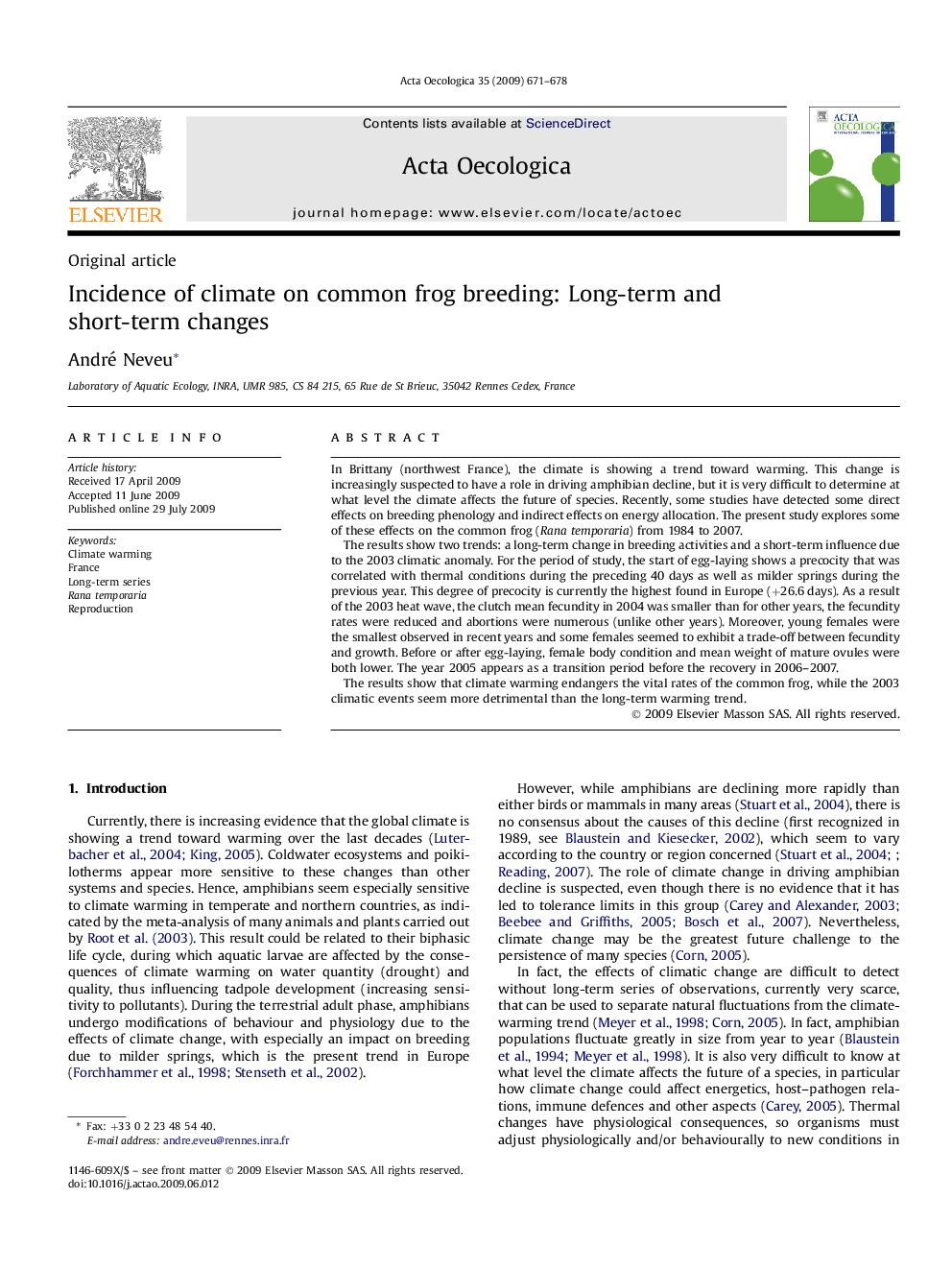| Article ID | Journal | Published Year | Pages | File Type |
|---|---|---|---|---|
| 4381434 | Acta Oecologica | 2009 | 8 Pages |
In Brittany (northwest France), the climate is showing a trend toward warming. This change is increasingly suspected to have a role in driving amphibian decline, but it is very difficult to determine at what level the climate affects the future of species. Recently, some studies have detected some direct effects on breeding phenology and indirect effects on energy allocation. The present study explores some of these effects on the common frog (Rana temporaria) from 1984 to 2007.The results show two trends: a long-term change in breeding activities and a short-term influence due to the 2003 climatic anomaly. For the period of study, the start of egg-laying shows a precocity that was correlated with thermal conditions during the preceding 40 days as well as milder springs during the previous year. This degree of precocity is currently the highest found in Europe (+26.6 days). As a result of the 2003 heat wave, the clutch mean fecundity in 2004 was smaller than for other years, the fecundity rates were reduced and abortions were numerous (unlike other years). Moreover, young females were the smallest observed in recent years and some females seemed to exhibit a trade-off between fecundity and growth. Before or after egg-laying, female body condition and mean weight of mature ovules were both lower. The year 2005 appears as a transition period before the recovery in 2006–2007.The results show that climate warming endangers the vital rates of the common frog, while the 2003 climatic events seem more detrimental than the long-term warming trend.
